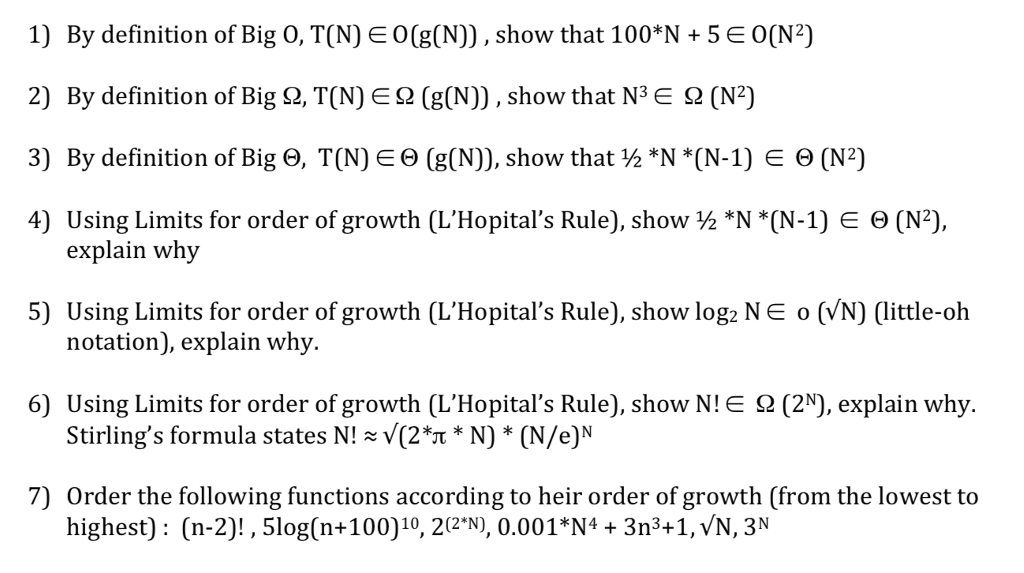Answered step by step
Verified Expert Solution
Question
1 Approved Answer
1) 2) 3) 4) By definition of Big 0, T(N) EO(g(N)), show that 100*N+5 E0(N2) By definition of Big S2, T(N) E (g(N)) , show

Step by Step Solution
There are 3 Steps involved in it
Step: 1

Get Instant Access to Expert-Tailored Solutions
See step-by-step solutions with expert insights and AI powered tools for academic success
Step: 2

Step: 3

Ace Your Homework with AI
Get the answers you need in no time with our AI-driven, step-by-step assistance
Get Started


